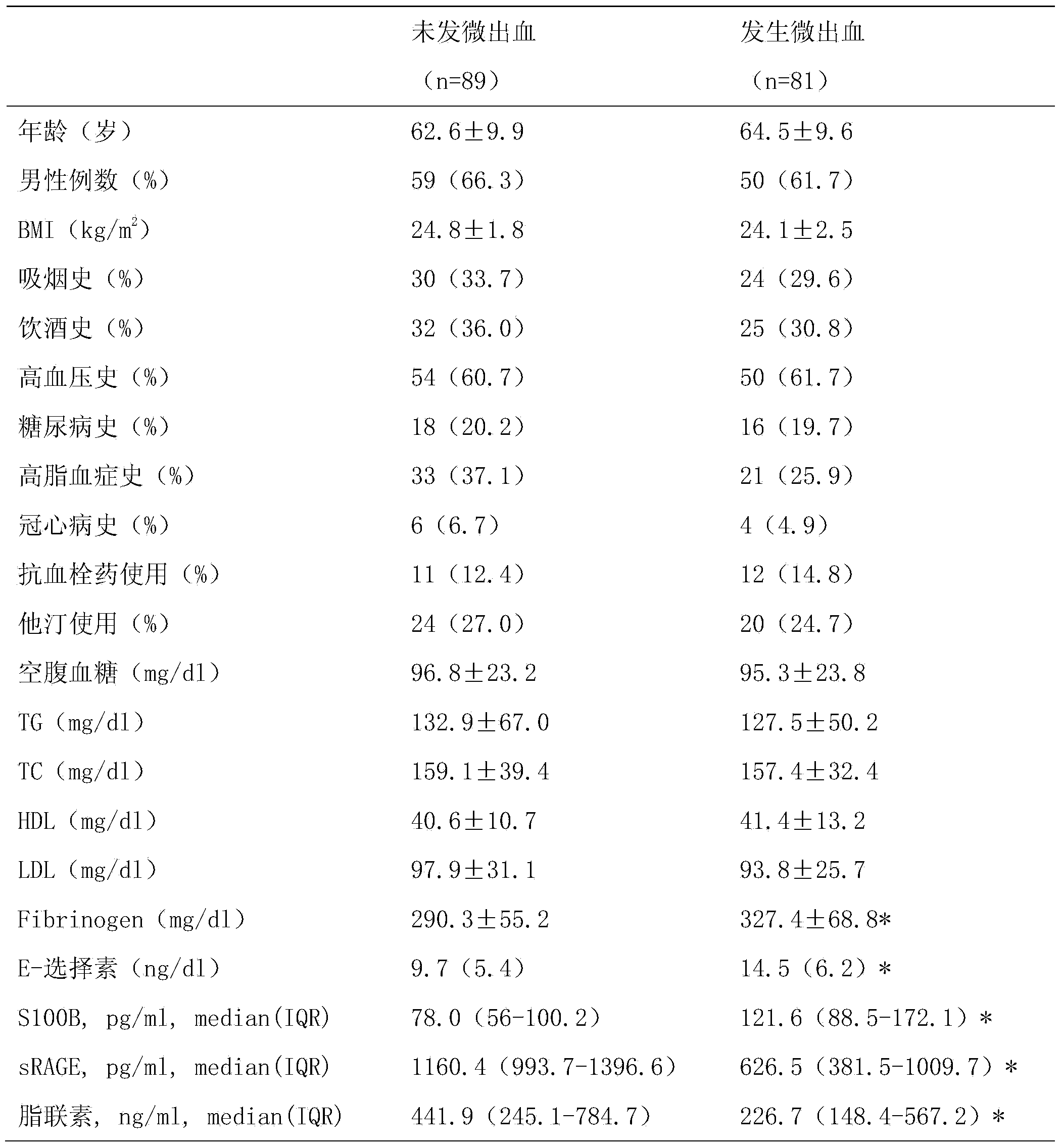Reagent for predicting micro-bleeding of acute cerebral infarction patient
A cerebral infarction and reagent technology, applied in the field of reagents for predicting the occurrence of microbleeds in patients with acute cerebral infarction, can solve the problems of low validation validity, accuracy and specificity, and achieve the effect of good predictive value
- Summary
- Abstract
- Description
- Claims
- Application Information
AI Technical Summary
Problems solved by technology
Method used
Image
Examples
Embodiment
[0022] 1 Materials and methods
[0023] 1.1 Research object
[0024] The subjects of the study were first-episode ischemic stroke patients who were hospitalized in Nanjing General Hospital of Nanjing Military Region from January 2012 to August 2012, and healthy volunteers with headache and dizziness during the same period served as the control group, all completed MRI (3.0T) Susceptibility sequence (SWI) scan. The degree of neurological deficit was scored by the National Institutes of Health Stroke Scale (NIHSS) by two neurologists who were blind to the results of imaging examinations. The inclusion criteria are as follows: (1) NIHSS score ≤ 8 points; (2) admitted to the hospital within 1 week of onset; (3) no contraindications for MRI examination (such as the presence of magnetic metal substances in the body). The exclusion criteria were as follows: (1) kidney or liver disease; (2) acute or chronic inflammatory diseases, such as pneumonia, meningitis, etc., and recent use o...
PUM
 Login to View More
Login to View More Abstract
Description
Claims
Application Information
 Login to View More
Login to View More - R&D
- Intellectual Property
- Life Sciences
- Materials
- Tech Scout
- Unparalleled Data Quality
- Higher Quality Content
- 60% Fewer Hallucinations
Browse by: Latest US Patents, China's latest patents, Technical Efficacy Thesaurus, Application Domain, Technology Topic, Popular Technical Reports.
© 2025 PatSnap. All rights reserved.Legal|Privacy policy|Modern Slavery Act Transparency Statement|Sitemap|About US| Contact US: help@patsnap.com

